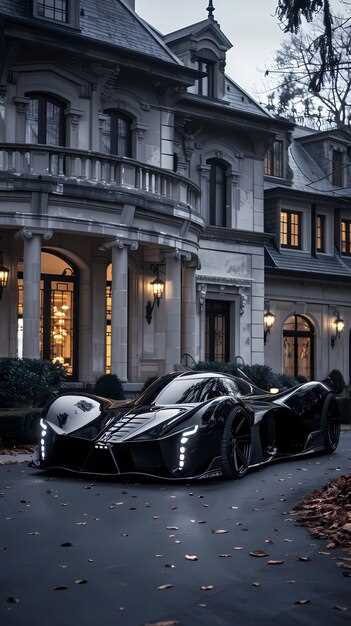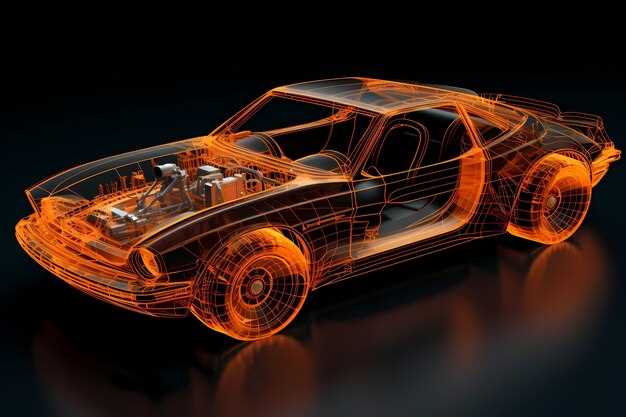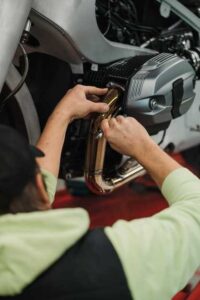Explore the phenomenal transition of supercars from their classic roots to today’s cutting-edge machines. The evolution of supercars is a story rich with innovation, engineering marvels, and breathtaking design. Starting with legendary models like the Ferrari 250 GTO, enthusiasts witnessed the birth of performance-oriented vehicles that defined a generation.
As technology advanced, so did the capabilities of these magnificent machines. The introduction of turbocharging in the 1980s marked a significant shift, allowing cars like the Porsche 959 to achieve remarkable speeds without compromising efficiency. This pivotal change paved the way for the high-performance standards we see in contemporary models.
Modern supercars such as the Bugatti Chiron and McLaren P1 showcase not just raw power, but also an integration of hybrid technology that enhances performance while being mindful of environmental concerns. The balance of speed and sustainability demonstrates how manufacturers innovate to meet the demands of today’s savvy consumers.
Each era of supercars tells a unique narrative, reflecting advancements in technology, changes in consumer preferences, and a relentless pursuit of performance. Step into the fascinating timeline of these extraordinary vehicles and uncover how tradition and modernity shape the supercar landscape.
Supercars Through Time: Classic to Modern Evolution
Explore the fascinating journey of supercars, beginning with the iconic models that defined the genre and transitioning to the cutting-edge technology of today.
In the 1960s and 1970s, cars like the Lamborghini Miura and Ferrari 512 BB set performance benchmarks with their powerful engines and striking designs. These vehicles introduced features such as:
- Mid-engine layouts for improved handling.
- High-revving V8 and V12 engines that delivered exhilarating performance.
- Distinctive styling that captured the imagination of car enthusiasts.
The 1980s brought the introduction of turbocharging, showcased by models like the Porsche 959 and Ferrari F40. Key advancements included:
- Enhanced aerodynamics for better stability at high speeds.
- Digital dashboards and improved electronics that increased driver engagement.
- Use of lightweight materials to enhance performance.
The 1990s and 2000s signified a shift towards even greater technological sophistication. Iconic names such as Bugatti Veyron and McLaren F1 emerged, highlighting:
- A focus on speed, with the Veyron breaking the 250 mph barrier.
- Hybrid technology making its first appearances, hinting at future sustainability.
- Integration of advanced telemetry systems for enhanced driving experiences.
Today’s supercars, including models like the Rimac C_Two and the latest Lamborghini Aventador, illustrate a new era in automotive engineering. Current trends involve:
- The rise of hybrid and electric powertrains for improved efficiency.
- Advanced assistance systems that enhance safety without compromising performance.
- Customization through digital interfaces, allowing owners to tailor their vehicles.
Future prospects show continuous integration of AI and connectivity, shaping a new generation of supercars poised for performance and sustainability. The evolution reflects a commitment to innovation while retaining the exhilarating essence that defines supercars.
The Birth of Supercars: Key Models in the 1960s
In the 1960s, the automotive industry witnessed the emergence of supercars, marked by a blend of innovative engineering and stunning design. The Lamborghini Miura, launched in 1966, set the standard with its mid-engine layout, enabling exceptional handling and speed. With a V12 engine producing 350 horsepower, it captivated enthusiasts and redefined performance expectations.
The Ferrari 250 GTO, introduced in 1962, remains iconic. With only 39 units produced, this model combines racing heritage and road-going capability. Equipped with a 3.0-liter V12 engine, it delivered a mesmerizing 300 horsepower, achieving a top speed of approximately 280 km/h. Its rarity and racing pedigree make it one of the most valuable cars today.
The Ford GT40, developed to compete in endurance racing, debuted in 1964. With a lightweight design and a powerful 7.0-liter V8 engine, it achieved fame by winning the 24 Hours of Le Mans four consecutive times from 1966 to 1969. This model not only established Ford’s reputation but also showcased American ingenuity in a European-dominated market.
Another notable model is the Maserati Ghibli, which hit the streets in 1967. With its elegant lines and a 4.7-liter V8 engine producing 330 horsepower, it blended performance with luxury. The Ghibli’s design aesthetic influenced future sports cars, establishing a benchmark for elegance in automotive design.
These vehicles encapsulated the spirit of the 1960s, pushing boundaries in speed, design, and technology, and laid the groundwork for the supercars of the future. Their legacy continues to inspire both manufacturers and enthusiasts alike.
Technological Breakthroughs: How Turbocharging Changed Performance
Turbocharging significantly enhances engine performance by increasing power output without drastically increasing engine size. This technology compresses and delivers more air into the combustion chamber, allowing for more fuel and, consequently, more power. The implementation of turbochargers led to remarkable improvements in horsepower and torque across various vehicle classes, especially supercars.
One notable example is the introduction of turbocharged engines in the Porsche 911 Turbo in the late 1970s. This innovation allowed the 911 to achieve higher speeds while maintaining relatively compact dimensions. As a result, turbocharging became synonymous with performance in the automotive sector.
Incorporating turbochargers yields multiple benefits beyond power enhancement. For instance, smaller engines equipped with turbochargers can maintain efficiency and reduce fuel consumption. A classic example is the Ford EcoBoost engine family. Despite its smaller displacement, Ford’s turbocharged models demonstrate impressive fuel economy while still delivering exciting performance figures.
However, potential drawbacks exist, including turbo lag, which occurs when there is a delay in the turbocharger responding to throttle input. Manufacturers have worked to mitigate this issue with advancements in technology, such as twin-scroll turbos and variable geometry turbos. These solutions help deliver power more efficiently and reduce lag, resulting in a smoother acceleration experience.
The table below illustrates the evolution of turbocharged engines in supercars over the past few decades:
| Supercar Model | Engine Type | Power Output | Year Introduced |
|---|---|---|---|
| Porsche 911 Turbo | 3.3L Turbo Flat-6 | 300 HP | 1975 |
| Ferrari F40 | 2.9L Twin-Turbo V8 | 478 HP | 1987 |
| Nissan GT-R R35 | 3.8L Twin-Turbo V6 | 565 HP | 2007 |
| Ford GT | 3.5L Twin-Turbo V6 | 660 HP | 2017 |
The future of turbocharging looks promising. As manufacturers continue to innovate, hybrid technologies are emerging, blending electric motors with turbocharged engines for instant torque. This combination not only enhances performance but also meets stricter emission regulations. Turbocharging has firmly established itself as a cornerstone in the evolution of supercars, effectively balancing power, efficiency, and environmental considerations.
Design Evolution: Iconic Aesthetics from 1970s to 1990s
The design language of supercars experienced remarkable transformation from the 1970s to the 1990s. Car manufacturers entered an era where aesthetics were as crucial as performance. The 1970s marked a departure from the more boxy styles of earlier decades. Fluid lines and bold colors characterized many models, such as the Lamborghini Countach, with its dramatic wedge shape and scissor doors, becoming an aesthetic icon.
As the 1980s rolled in, designers favored angularity and aggression. The Ferrari F40 embodied this sporty aesthetic with its sharp edges and functional air intakes, emphasizing performance alongside visual impact. This decade thrived on a sense of experimentation, giving rise to bold designs like the Porsche 959, which seamlessly blended aerodynamics with iconic looks.
The 1990s ushered in a new sophistication in design, influenced by advancements in technology and safety standards. The McLaren F1 emerged as a pinnacle of this era, showcasing minimalist lines and a focus on aerodynamics. The use of lightweight materials further refined its profile, enhancing both speed and elegance. Brands like Bugatti returned with the EB110, emphasizing curves alongside advanced engineering.
Throughout these decades, the use of pop-up headlights became symbolic of the era, seen on models like the Mazda RX-7. This feature not only added a sporty touch but also improved aerodynamics when closed. Color palettes evolved as well; vibrant hues became popular in the 1980s, while the 1990s saw a return to more muted tones, reflecting a maturing design sensibility.
Each decade left a significant legacy, shaping not just the cars of the time but influencing future designs. The supercars from the 1970s to 1990s established an aesthetic identity that continues to inspire modern automotive design. Recognizing these shifts helps appreciate the artistry and engineering that define these iconic vehicles.
Impact of Electronics: The Rise of Digital Features in the 2000s
The 2000s marked a significant shift in supercar design with the integration of advanced electronics. Automakers increasingly incorporated digital features that transformed driving experiences and vehicle performance. One of the first notable advancements was the introduction of electronic stability control, which enhanced safety by preventing skidding and loss of control during sharp turns or adverse weather conditions.
Luxury models began to feature adaptive cruise control, utilizing radar and sensors to maintain a set speed while adjusting to traffic conditions. This innovation gave drivers a level of convenience previously unseen in high-performance vehicles, allowing for more relaxed driving on highways.
Infotainment systems emerged as a staple in supercars during this decade. Touchscreen interfaces replaced traditional dials and buttons, offering drivers easy access to navigation, entertainment, and vehicle settings. The integration of smartphone connectivity became prevalent, enabling seamless access to music and communication without distractions.
Additionally, manufacturers embraced telemetry systems that provided real-time data to drivers, including tire pressure, temperature readings, and fuel consumption. These features not only enhanced driving dynamics but also allowed enthusiasts to monitor performance metrics during track days or spirited drives.
Lastly, the rise of ride-by-wire technology revolutionized throttle response. With electronic control replacing mechanical linkages, automakers fine-tuned performance characteristics, providing a more responsive and engaging driving experience. This advancement contributed to better acceleration and handling, further solidifying the appeal of supercars in the market.
Hybrid and Electric Supercars: The Future of Performance Driving
Choose hybrid and electric supercars for cutting-edge performance with lower emissions. Brands like Porsche and Tesla lead the charge, offering models that showcase exhilarating speed alongside eco-friendliness. For instance, the Porsche 918 Spyder combines a V8 engine with electric motors, achieving 0-60 mph in just 2.5 seconds while maintaining impressive fuel efficiency.
Explore the exceptional handling and torque delivery of electric vehicles. The Tesla Roadster promises a staggering 620 miles of range while hitting 0-60 mph in under 2 seconds. This not only heightens driving pleasure but also reduces range anxiety, making electric supercars more practical for enthusiasts.
Innovations like regenerative braking enhance the driving experience while conserving energy. By converting kinetic energy back into battery power, these systems improve efficiency on the road. Models like the McLaren Artura feature advanced aerodynamics and lightweight materials, optimizing speed and responsiveness without compromising environmental benefits.
Future models are set to integrate more advanced battery technology, promising quicker charging times and extended range. Keep an eye on developments from Aston Martin and Ferrari, as they unveil hybrid offerings designed to rival traditional combustion engines in both power and performance.
As manufacturers prioritize sustainability, hybrid and electric supercars will continue to evolve, delivering thrilling performance while contributing to a greener future. Experience the fusion of speed, innovation, and responsibility in these remarkable machines.
Collecting Supercars: Factors that Influence Value Over Time
Investing in supercars offers both excitement and financial opportunities. To enhance your collection’s value, focus on these key factors:
- Rarity: Limited production models tend to appreciate more significantly. Brands like Ferrari and McLaren often produce fewer units, raising desirability.
- Condition: Originality matters. Cars with factory parts and minimal modifications command higher prices. Keep records of maintenance and restoration.
- Provenance: Cars with notable ownership histories or connections to famous figures are often more valuable. Documenting such stories adds to a car’s market appeal.
- Performance: Supercars with exceptional performance metrics, such as speed and handling, remain more desirable. Periodic testing and awards enhance credibility.
- Market Trends: Stay informed about collector trends. Certain models may surge in popularity due to cultural phenomena, films, or racing success.
- Brand Reputation: Brands with a strong motorsport heritage or positive brand image typically retain value better. Recognize which manufacturers have loyal followings.
Evaluate these elements carefully when expanding your collection. Understanding market dynamics helps in making informed decisions and maximizing potential returns.







